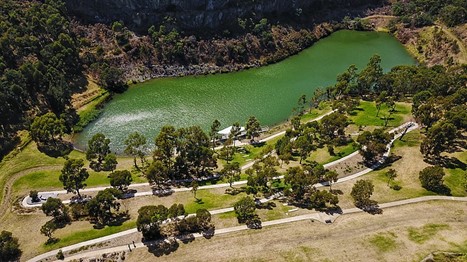Working Safely with Geotechnical Risk in Quarries
Dr Elizabeth Gibson provides an update on the progress of the CMPA Guideline Working Safely with Geotechnical Risk in Quarries Version 2.
The CMPA has expended $55,000 on the development of the Geotechnical Guideline Version 2 2022 (including the development of the initial Geotechnical Guideline, 2014) through using the Policy and Special Issues Fund which relies on Gold Memberships to support recommended projects of the Management Committee.
This Guideline ‘Working Safely with Geotechnical Risk in Quarries’ together with the CMPA’s Work Safely Reference Manual aims to support CMPA members in meeting the requirements of the Victorian Occupational Health and Safety Act 2004 by ensuring that:
• Geotechnical hazards associated with quarry ground movement and quarry operations are identified, assessed where required and then controlled in a manner to reduce the risk of personal or vehicle engulfment, and
• Quarry infrastructure is established in a manner so as to prevent vehicles that have lost control, or persons working close to edges from falling to another level.
To achieve the above this Guideline focusses on pit design and water management, the two most critical elements of winning source materials in a safe and economical manner.
This guideline also intends to inform and support CMPA members by providing guidance when:
• Sourcing information for establishing and applying for a Work Plan / Work Plan Variation.
• Sourcing information and materials on Registered Training Organisations (RTOs) and preparing to undertake training courses related to surface extraction operations.
• Planning and establishing quarry infrastructure such as faces, dams, sediment settlement ponds, haul roads, berms, stockpiles, overburden dumps and rehabilitation.
• Preparing risk management plans and in particular Ground Control Management Plans (GCMPs).
• Identifying and managing geotechnical risks during planning, design and operational stages.
The CMPA Guideline has been reviewed by Geotechnical Engineers and updated, for example, for Earth Resources Regulation (ERR) Guidance. It has also been amended for comments received from ERR, WorkSafe and CMPA Members. Material from the Guideline will also be collated together with an on-line training unit that encompasses the following:

Objective:
To create awareness amongst CMPA members of the risks that arise from common geotechnical hazards and provide examples of practical methods of either eliminating or reducing that risk to an acceptable level.
Target Audience:
• Quarry owners, managers, supervisors and workers.
Emphasis:
The emphasis will be on the inspection and control of:
• Geotechnical structures inclusive of haul roads, faces, stockpiles, slimes dams, water dams
• Drainage
• Blasting
Targeted Risk Activities and Outcomes:
• Vehicles that have lost control or persons working close to edges from falling to another level.
• Working in proximity of a face or a stockpile and being engulfed
• Working in proximity of a slimes or water dams and being submerged

Good News!
Conduct local geotechnical risk control in surface operations.
https://training.gov.au/Training/Details/RIIMEX303
The CMPA is pleased to announce that the first training course to complete the above Certificate 3 unit is to take place on Thursday 25 May 2023 in Ballarat and will be delivered by Box Hill Institute (Noel Pickering).
This unit describes the skills and knowledge required to conduct local geotechnical risk control in surface operations, including identifying ground conditions and implementing geotechnical risk controls.
It applies to those working in operational roles. They generally work under minimal supervision to undertake a broad range of skilled applications in varied work contexts, using some discretion and judgement in selecting equipment, services or contingency measures.









You must be logged in to post a comment Login